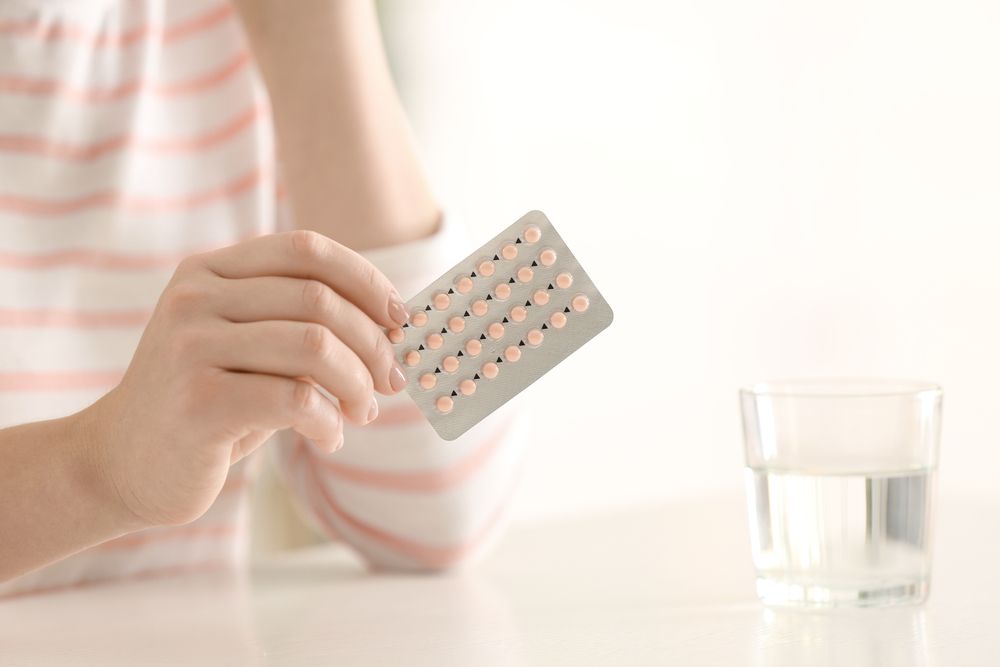Control over fertility is of central importance to women during their reproductive years. Today we have a wide array of options that vary greatly regarding their effectiveness, reversibility, side effects, safety, cost, and convenience of use. The plethora of choices is an asset, but it can also be confusing.
The choice of contraception (birth control) is a complex and very personal decision, and the patient must feel well-informed and supported by her care provider. Advising on and prescribing for contraception is among the most important roles for a gynecologist. Each patient will make her own choice based what’s most important to her and the information provided. This is a prime example of patient and doctor shared decision-making!
Hormonal methods
The most commonly used form of contraception is the combined estrogen-progestin oral contraceptive (COC), better known as the birth control pill. It is popular for good reasons: It is very effective (99.7%, when used perfectly), readily available, relatively inexpensive, and very safe in most women. But those who use it are human and not perfect – in actual use, it is only about 93% effective. That is, about seven of 100 women who use it will become pregnant each year, usually due to accidentally missed or late pills.
Other combined hormonal contraceptive methods include the vaginal ring and the skin patch, both of which must be changed weekly. There is also the so-called “mini-pill”, which contains only progestin and is used in women who shouldn’t take estrogen. Like COC, these methods are all about 99.7 % effective if used perfectly, but only about 93% in real use due to human error.
The hormone shot (Depo-Provera®) contains only progestin and is given every three months. It would be about 99.8% effective if given perfectly, but in real use is also about 93%, usually due to missed or late shots.
LARC (Long-Acting Reversible Contraception)
The most effective types of reversible contraception in actual use fall under the category of Long-Acting Reversible Contraception (LARC). Once placed, these continue to provide reliable contraception for a number of years (from three to ten years depending on the device) without the need to remember to take them daily or weekly. These include the intrauterine device (IUD) and the progestogen hormonal skin implant (Nexplanon®).
The IUD is inserted into the uterus during an office procedure. There are two main types of IUD. The copper IUD provides up to ten years of contraception. There is only one brand, Paragard®. The other type is progestogen-releasing IUDs – there are several brands. These all slowly release the hormone levonorgestrel (LNG). They prevent pregnancy for up to 3 to 8 years, depending on the brand. The LNG IUDs have one advantage: they tend to reduce the amount of menstrual flow in contrast to the copper IUD which may increase menstrual flow and cramping in some women. All IUDs have the advantage that they are functionally “set it and forget it” – once they are placed the woman does not have to remember to take a pill, change the patch, use a condom, etc.
The other form of LARC is a skin implant sold under the brand name Nexplanon®. This is a small rod that is placed under the skin of the woman’s upper arm. It’s about an inch and a half long and is the width of a matchstick. It slowly releases the progestogen etonogestrel and will prevent pregnancy for three years. Menstrual cycles often become lighter and less crampy and a third of women stop having periods altogether after one year of Nexplanon®. Some women complain about irregular, sporadic bleeding that is usually light but is unpredictable. Weight gain can occur but is uncommon.
Barrier and Spermicidal Methods
There are numerous methods that work by killing sperm or blocking it from entering the female system to encounter an egg. They have essentially no medical side effects, but the trade-off is that they are all somewhat less secure than the above methods in terms of preventing pregnancy with annual failure rates of about 13-21% (about 1 out of every 5-7 women using them will become pregnant each year).
Two of these measures require an office visit and a prescription: the diaphragm and the cervical cap. These have the advantage that they can conveniently be inserted prior to foreplay and intercourse.
The other barrier and spermicidal methods are available over the counter and include the external (male) condom, the internal (female) condom, the sponge, and spermicidal gel. The sponge can be inserted up to 24 hours before sex, but the others must be applied at the time of intercourse.
Important note about sexually transmitted infections (STIs):
Of all the methods of contraception, only the external or internal condom offer protection against STIs. Therefore, a condom should often be used in addition to other methods to prevent the risk of infection.
“Natural” or “Fertility awareness-based” Methods
These contraceptive methods are based on understanding when ovulation occurs and, thus, when fertilization might occur from intercourse. Intercourse must then be avoided (or an alternative form of contraception used) on the potentially fertile days of the month – often up to 10-12 days per cycle.
Techniques for timing include taking basal body temperatures, checking cervical mucous, calendar timing, and measuring hormones in the urine. These methods can be complex and require motivation and diligence to be followed correctly. Accurate failure rates are not documented due uncommon use and lack of large-scale studies. Online resources and apps exist, but their reliability is difficult to determine. These may be more appropriate for those who are highly motivated or are spacing fertility but can tolerate an unplanned pregnancy.
Permanent Contraception
This discussion has concerned reversible forms of contraception. For the woman or couple who are certain that they have no desire for future pregnancy, then female tubal occlusion or male vasectomy offer a permanent solution. For the one-time risk and expense of a minor surgical procedure, very reliable contraception of 99.5% to 99.9% is obtained.
No contraception
Finally, the chance of becoming pregnant for one year of sexual intercourse without contraception is about 85%
How to decide on a method of contraception?
The above is for information and orientation regarding methods. It is not exhaustive – the most highly regarded reference book on contraception has over 900 pages(!) – but I hope this may serve as an introduction to the very personal and individual discussion between a woman and her care provider.
For more information or to make an appointment for further discussion, please call 919-916-3333.
Note: The CDC, among others, has a good summary of contraception options:
https://www.cdc.gov/reproductivehealth/contraception/index.htm


